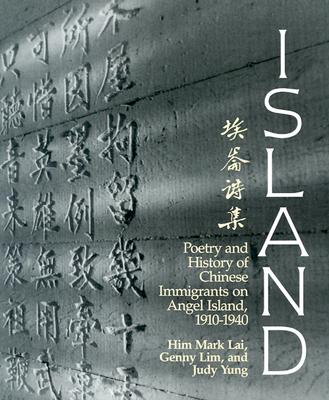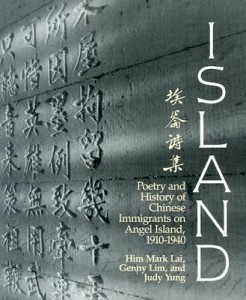01 Mar / Island: Poetry and History of Chinese Immigrants on Angel Island, 1910-1940 edited by Him Mark Lai, Genny Lim, and Judy Yung [in What Do I Read Next? Multicultural Literature]

 Angel Island was the West Coast entry point for potential Asian immigrants and returning Asian Americans. An elaborate interrogation process kept people detained there, in limbo, for up to two years. In 1970, a park ranger discovered poetry scratched by detainees onto the barrack walls; as a result of a local community effort, the buildings were preserved and Angel Island turned into a state park.
Angel Island was the West Coast entry point for potential Asian immigrants and returning Asian Americans. An elaborate interrogation process kept people detained there, in limbo, for up to two years. In 1970, a park ranger discovered poetry scratched by detainees onto the barrack walls; as a result of a local community effort, the buildings were preserved and Angel Island turned into a state park.
When the Chinese Exclusion Act of 1882 passed, for the first time in U.S. history, a specific ethnic group was denied entry and participation in the U.S. naturalization process. According to the new immigration laws, only government officials, merchants, students, teachers, visitors, and those with proof of U.S. citizenship were allowed to enter the U.S. In order to gain admittance, potential immigrants were subjected to medical scrutiny and an elaborate questioning process before being released; even after being detained for substantial periods, deportation was not uncommon. The waiting could be just two days or even two years. At any given time, between 200 and 300 males and 30 to 50 females were detained. Evidence of the immigrants’ ordeal is recorded in the poetry literally carved into the barrack walls.
Island is both classic literature and unforgettaable historical testament to our collective Asian Pacific American forebearers. For more information about Angel Island today, check out the Angel Island Immigration Station Foundation.
Review: “Asian American Titles,” What Do I Read Next? Multicultural Literature, Gale Research, 1997
Readers: Adult
Published: 1980
